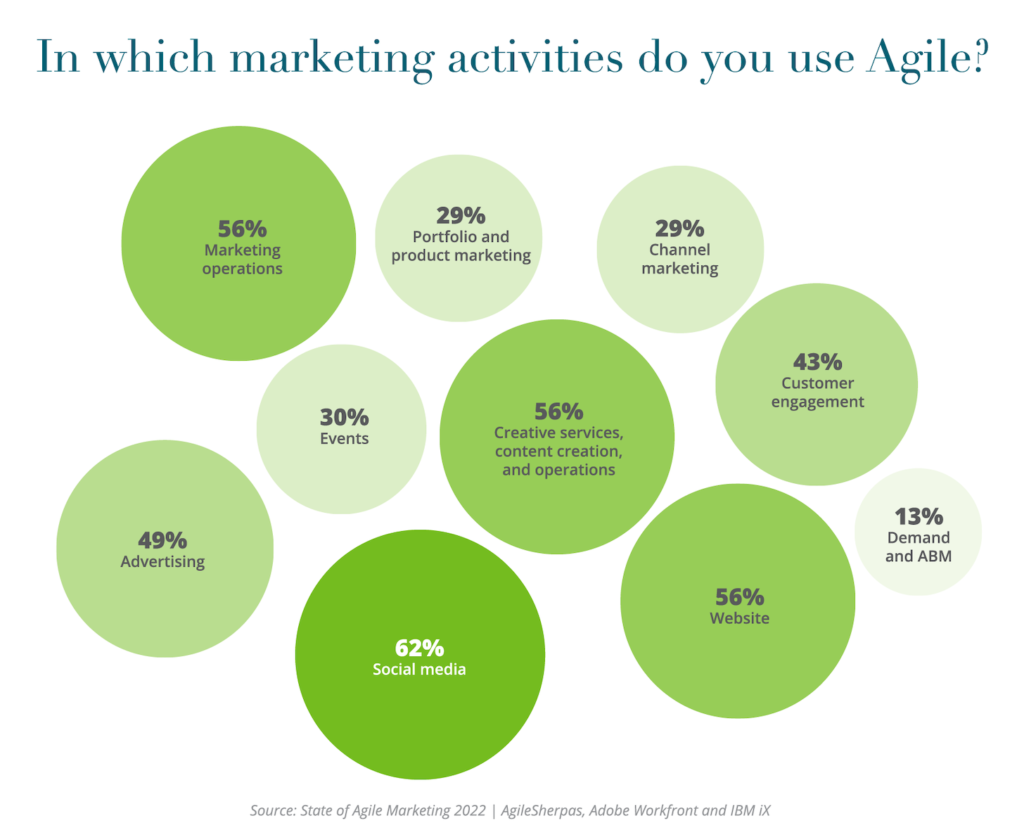Kudos to Frank Days, John Cass, and now Amy Callahan, who have kicked started the Boston Agile Marketing Meet-Up back into gear over the past couple of months.
In September, David Quinn of EMC gave a terrific presentation of their experience with agile marketing, the video of which is available on YouTube. (You can also read the Q&A I had with David and Amy back in May, how EMC successfully adopted agile marketing.)
Last week, Mike Volpe, the CMO of HubSpot and an early agile marketing pioneer, shared with the group HubSpot’s journey with agile marketing and how it’s evolved over the years. I believe a video recording of the event will eventually be released, but in the meantime, here are two takeaways from Mike’s presentation that I found particularly compelling.
(This is my interpretation of his talk, which assumes some familiarity with agile marketing. If you’re new to this topic, you might want to read this introduction to agile marketing and this post debunking 3 myths of agile marketing.)
#1: Transparency is a tremendous benefit of agile marketing
Marketing as a function often suffers a trifecta of misperceptions by many people (perhaps, especially, ahem, from some of our compatriots in the sales department):
- Many people don’t really know what marketing does all day.
- Many people think they could do what marketing does, since it doesn’t look hard.
- Many people want things that they perceive as “something quick” from marketing, and they usually need it “right now”.
It can be hard to get respect in the face of those misconceptions.
If marketers try to fulfill all of those “something quick” requests, they can be pulled into a vicious cycle of interrupt-driven work that keeps them from investing in more important initiatives. But if they turn down those requests — or postpone them until other, more important work is done — the requesters can feel like they’re being blown off.
One of the main benefits of adopting agile marketing is that it shines a bright light to dispel these misunderstandings.
With agile marketing, the task board shows the prioritized list of what the marketing team is working on for that sprint. It’s available for everyone in the company to see. It doesn’t require fancy software. In HubSpot’s case, they used a wiki. The backlog of tasks to be considered for future sprints is also usually visible as well, so they know what is likely to be coming up for the next sprint too.
This transparency clears up two of those three misperceptions right away.
First, everyone can see all of the things that marketing is working on. Surprise, surprise — when you map out the tasks for all to see, it turns out that marketing actually does a lot. Sometimes this is even helpful for the marketing team itself (and its management) to appreciate all that’s going on within their ranks. Marketing gets more respect for its workload.
Second, this improved visibility into what marketing is working on changes the dynamics of all those impromptu requests. Now, people can see what marketing is in the middle of, and it’s easier to point out that reshuffling those priorities to squeeze something new in will have a ripple effect on everything else already in the pipeline. Those trade-offs may still need to be made in some cases, but it’s no longer done lightly. And if the decision is made to postpone the new request, the requester may still have it registered in the backlog for consideration in a future sprint. It’s not lost in a void that feels like being blown off.
As for the “doesn’t look hard” misperception — after peering into the firehose of marketing’s backlog over time, even this myth can start to fade too.
#2: Agile marketing manages activity, not performance
Agile marketing is a methodology for organizing the activities of the marketing team. What needs to be done? What’s their relative priority? What can we tackle over the next sprint? Who’s working on what now? How’s it coming along?
It’s not, however, the only axis by which marketing must be managed.
For instance, a big part of marketing is the measurement of its results. How many leads are brought to sales each month? Which efforts delivered those leads? At what cost? What is the quality of those leads? How much do they contribute to revenue?
Of course, these metrics are directly related to the activities marketing does. But their measurement can’t always be aligned within the same time period when people are working on those activities. It may take weeks or months before the return on certain marketing initiatives becomes clear. Some initiatives, such as branding efforts, may never be able to have their impact precisely attributed.
That’s okay. The solution is not to try to shoehorn performance evaluation into the agile methodology. Some people have suggested that a marketing task should not really be considered “done” until its results are measured — but that quickly complicates overlap from one sprint to another.
Instead, performance reporting and analysis can be done at a level above the execution of these tasks. Those results can then inform choices for prioritization of tasks in the planning for future sprints — do more of the things that work, less of the things that don’t.
Once you realize that you don’t have to wedge everything into the agile methodology, it helps resolve some of the other logistical questions that often arise with agile marketing.
Are there persistent tasks that some team members have to work on all the time, such as answering email and engaging in social media? Or unpredictable opportunities that need to be addressed in the moment, such as interview requests from the press? Simply estimate the percentage of time that each team member has available for sprint tasks, and then make commitments during sprint planning accordingly.
For example, Mike estimated that most of the marketing staff at HubSpot committed between 40-60% of their time for sprint tasks, and the rest of their time was allocated for other responsibilities.
Are there long-scale marketing initiatives that require many coordinated steps over time with immovable calendar deadlines — such as trade shows or conference events? Those plans can be made at a level above the sprint, and then the tasks required to execute the steps along the way can be scheduled in the corresponding sprint. Of course, this often requires that those tasks be given top priority, since their due dates typically can’t be punted.
By not trying to force agile marketing to do things that it isn’t suited towards, while still embracing its core principles and adapting the process to fit the company’s evolving needs, Mike has built an incredibly successful marketing organization that is agile in the truest sense of the word.
Many thanks to Mike for sharing his experience!
P.S. If you’re in the Boston area, we’re planning our next Agile Marketing Meet-Up for January or February 2014. Come join us!




Hi,
Very interesting Scott. Don’t you think that the performance analysis could be undertaken as the “Check” activity within a Plan>Do>Check>Act process as per an adaptation of the “Deming wheel” to marketing?
An “adopt and adapt” approach like the one that prevails in agile marketing which concepts are adapted from IT…
Kind regards
I’ve just implemented agile marketing for a social travel community. It has given the team an incredible focus, buzz and energy. Short timeboxes mean that the site has been given a life it previously did not have. The end result being a site that was wallowing in stagnant waters going from strength to strength. Cannot recommend the approach enough